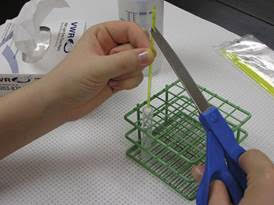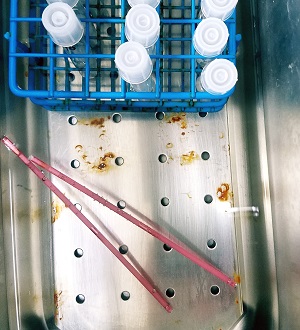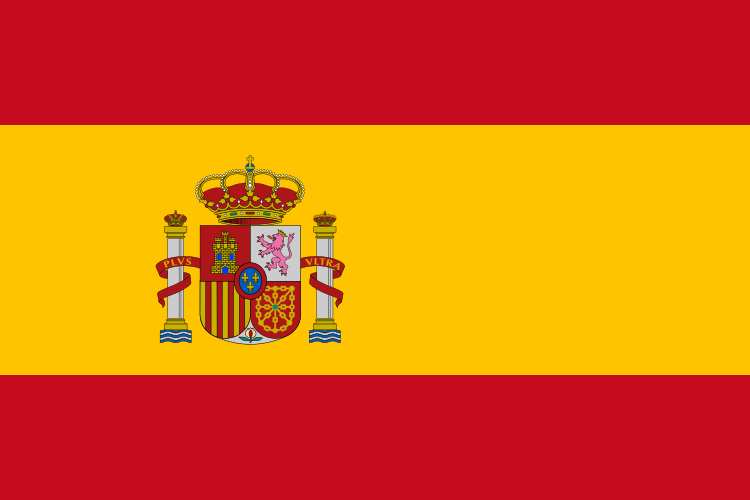 One concern some mare owners and veterinarians have with using equine frozen semen is the MYTH that it is difficult to thaw and breed a mare with it...this is not true. The process of thawing frozen semen is fairly simple if you have the right tools. Also, inseminating a mare with frozen semen isn’t any different than inseminating her with cooled or fresh semen, unless you are using a deep horn insemination technique. The only concern is that one must follow the specific thawing instructions precisely in order to obtain maximum post-thaw survival. This requires careful attention to detail and a temperature controlled water bath.
One concern some mare owners and veterinarians have with using equine frozen semen is the MYTH that it is difficult to thaw and breed a mare with it...this is not true. The process of thawing frozen semen is fairly simple if you have the right tools. Also, inseminating a mare with frozen semen isn’t any different than inseminating her with cooled or fresh semen, unless you are using a deep horn insemination technique. The only concern is that one must follow the specific thawing instructions precisely in order to obtain maximum post-thaw survival. This requires careful attention to detail and a temperature controlled water bath.
Items Needed to Thaw Equine Frozen Semen
Water Bath: A temperature controlled water bath is ideal so the water temperature will remain constant during the thawing process. The water bath should be cleaned regularly and the water used to fill it should be distilled. Bacteria growing in the water bath can possibly contaminate the semen and have an adverse effect on the semen or cause an infection in the mare. So, make sure the water bath is clean at the time of thawing.
Thermometer: An accurate thermometer is used to ensure the water bath is set at the correct temperature. The required temperature is determined by the size of the straw and the instructions provided to you at the time you received the frozen semen. Sperm are very temperature sensitive (both to cold and to heat) and sometimes it can be difficult to get the water bath set at the exact temperature required. Due to the extreme sensitivity to heat, it is better to be one or two degrees below the required temperature than above.
Hemostats or Tweezers: These will be used to transfer the straws from the frozen semen storage container to the water bath and then again from the water bath to the paper towel used to dry off the straws. Residual water on the straws can be spermicidal. We also recommend the instruments be cleaned with isopropyl alcohol prior to being used for the thawing process in order to eliminate bacterial introduction into the water bath.
 Timer or Watch with a Second Hand: The time the straws are to remain in the water bath should be described on the thawing instructions. It is very critical to keep to the recommended time, especially when a higher temperature (i.e. 50 degrees Celsius) is required when thawing 5.0 ml straws. However, when thawing multiple 0.5 ml straws in a 37°C water bath it is ok if they are in the water bath a little longer than the suggested time. We recommend starting the timer after the last 0.5 ml straw hits the water.
Timer or Watch with a Second Hand: The time the straws are to remain in the water bath should be described on the thawing instructions. It is very critical to keep to the recommended time, especially when a higher temperature (i.e. 50 degrees Celsius) is required when thawing 5.0 ml straws. However, when thawing multiple 0.5 ml straws in a 37°C water bath it is ok if they are in the water bath a little longer than the suggested time. We recommend starting the timer after the last 0.5 ml straw hits the water.
Scissors: These will be used to cut off the end of the straws when emptying them into a “red top” tube or centrifuge tube so the contents of the straws are combined prior to breeding. We also recommend the scissors be cleaned with isopropyl alcohol prior to being used to cut the straws.
The remaining required items are the exact same as you would use when breeding your mare with fresh or cooled semen. They are an all plastic syringe, insemination pipette, non-spermicidal gel, and a sterile insemination sleeve.
The Thawing Process
There are many different ways to package equine frozen semen. However, most are packaged in either 0.5 ml plastic straws or 5.0 ml plastic “macro straws”. Below we address the general thawing procedures for these packaging systems. However, it is always best to obtain the thawing instructions from the laboratory which processed the frozen semen.
Thawing 0.5 ml Straws
- Once the perineum of the mare has been aseptically cleaned, using a pre-cooled hemostat remove the straws from the nitrogen container and immediately place them into the 37°C water bath. Removing the straws from the tank should be done in 2-3 seconds at maximum.
- After the straws are plunged in the water bath, leave them for at least 30 seconds to ensure proper thawing. The number of straws that comprise a single insemination dose may vary according to the freezing procedure employed. SBS standard protocol is to include 8 straws per insemination dose.
- Once all of the straws of the insemination dose have been thawed, remove them one by one and wipe the straws completely using a paper towel. As mentioned, water would be spermicidal if it comes in contact with the semen.
- Shake the straw to position the air bubble at the sealed end. Straws are typically sealed with either a small metal ball or PVC powder but can also be heat sealed which is referred to as crimped.
- Holding the straws vertically, cut off the crimped or sealed end.
- After the sealed end is cut off, place the open end of the straws over a sterile, pre-warmed (37°C) container (i.e. red top blood tube, or centrifuge tube) and cut off the plug on the other end of the straws and allow the semen to empty into the sterile container. Tap the end of the straw to ensure that all of the semen is removed. Repeat this procedure for all of the thawed straws, combining their content into a single container.
- Using a sterile pre-warmed insemination pipette and an all plastic syringe, draw 5 ml of air into the syringe as to act as an “air dam” behind the semen. This will ensure that all of the semen is deposited in the mare’s uterus. After the air dam, draw the thawed semen into the syringe and inseminate the mare as you would with fresh or chilled semen.
- At this point, you may choose to look at a drop of the semen used to breed your mare under a microscope. If you so choose, please review our article Analysis of Frozen-Thawed Equine Semen.
There are a few differences between thawing the smaller 0.5 ml straws and these larger 5.0 ml macro straws. They are:
- 5.0 ml macro straws require either two water baths (one at 50°C and the other at 37°C) or a water bath (50°C) and an incubator (37°C).
- If the macro straw is left in the 50°C water bath for even a few seconds longer than the directed time, the exposure to the elevated temperature will irreversibly damage the sperm. Whereas, leaving the smaller straws in the body temperature (37°C) water bath for a few additional seconds or minutes will not be harmful to the sperm.
- Macrotubes are sealed with steel or glass balls and caution should be taken when thawing these tubes. If there is insufficient air space in the tubes or if the air bubble is not positioned in the middle of the tube, the straw may explode or the sealing ball may be expelled from the straw with tremendous force. You should always wear protective eyeglasses when thawing these straws.
Thawing 5 ml Macro Straws:
- Once the perineum of the mare has been aseptically cleaned, using a pre-cooled hemostat remove the straw from the nitrogen container and immediately place into the 50°C water bath. Keep the straw in the water bath for exactly 45 seconds and then immediately remove the straw and place in a 37°C water bath or incubator.
- After thawing, they should be dried to remove any residual water as it can be spermicidal if it comes in contact with the semen.
- Shake the straw to position the air bubble at one end and cut off one sealing ball.
- Invert the straw so that the open end is positioned over a sterile, pre-warmed container (37°C) and cut off the other end to allow the semen to empty into the container.
- Using a sterile pre-warmed insemination pipette and an all plastic syringe, draw 5 ml of air into the syringe as to act as an “air dam” behind the semen. This will ensure that all of the semen is deposited in the mare’s uterus. After the air dam, draw the thawed semen into the syringe and inseminate the mare as you would with fresh or chilled semen.
- At this point, you may choose to look at a drop of the semen used to breed your mare under a microscope. If you so choose, please review our article Analysis of Frozen-Thawed Equine Semen.
Please note: SBS does not recommend adding extender to the semen. Our article, Should Frozen-Thawed Semen Be Diluted Prior to Insemination?, provides further detail. Also, keep in mind that all the equipment and material that comes in contact with the semen should be non-toxic and not spermicidal.
Here are some recommended articles from the SBS Knowledge Library that we think you will find useful.
Not All Frozen Semen is Created Equally
Quality Control is at the Core of the SBS Difference
What Exactly is a Dose of Frozen Semen?
Understanding Your Frozen Semen Transaction Report
Colt Born 14 Years After Stallion’s Death


Log in to join the conversation.